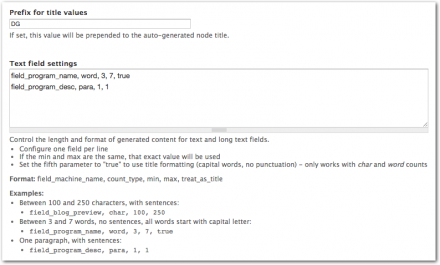

Drupal also enables you to provide information about the cacheability of data to the Render API to improve the performance of page rendering. In order to make it easier to store, retrieve, and invalidate cached data, Drupal provides cache-related services you can use in your code.

By performing the operation once, and then caching the result for next time, subsequent requests can be fulfilled faster. Some operations are time consuming, memory heavy, CPU intense, or all 3. Creating the HTML for the page that a user sees or the JSON response to a REST request can require thousands of operations. Many of the processes that Drupal performs when responding to a request are cached in order to increase performance.
#Drupal devel view v code
#Drupal devel view v how to
This tutorial will look at the YAML data format and provide examples of how to write and read YAML. Good thing it's pretty easy to learn even with the most basic of programming backgrounds. Even site builders are likely to encounter YAML at least in passing as YAML is the data-serialization format of choice for Drupal's configuration management system. Anyone wanting to write modules, or themes, for Drupal will need to understand YAML syntax. YAML, which stands for YAML Ain't Markup Language, is a human-readable data serialization format that's been widely adopted in a variety of use cases in Drupal. As you learn to develop modules for Drupal, you’ll use a combination of PHP fundamentals combined with Drupal-specific functions and APIs. The latest version Drupal is largely written using object-oriented programming (OOP), while Drupal 7 was written primarily using procedural programming, though you'll encounter a smattering of object-oriented elements there as well.
#Drupal devel view v software
PHP is the programming language in which Drupal software is written, so you should be comfortable with it before diving in. When creating solutions to meet their specific use case, developers do so with an eye towards creating reusable tools when possible, and/or collaborating with other developers to enhance existing tools that are close to, but not quite, the solution needed.ĭevelopers are generally expected to be proficient with Drupal site building, and to know how to leverage the ecosystem of existing contributed modules and Drupal core APIs in order to prevent duplication. One of the more common tasks that developers do is to create “glue-code”: modules that make minor alterations to the way an existing module works that are application-specific, or modules that tie existing modules together in a unique way, without modifying the original code. Developers, also known as engineers or programmers, use their knowledge of PHP, MySQL, HTML, JavaScript, and CSS to extend, alter, and enhance Drupal by creating modules.


 0 kommentar(er)
0 kommentar(er)
